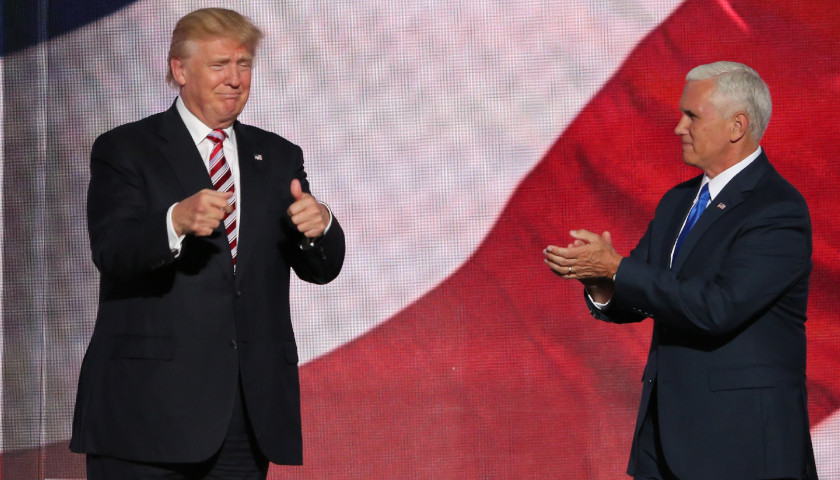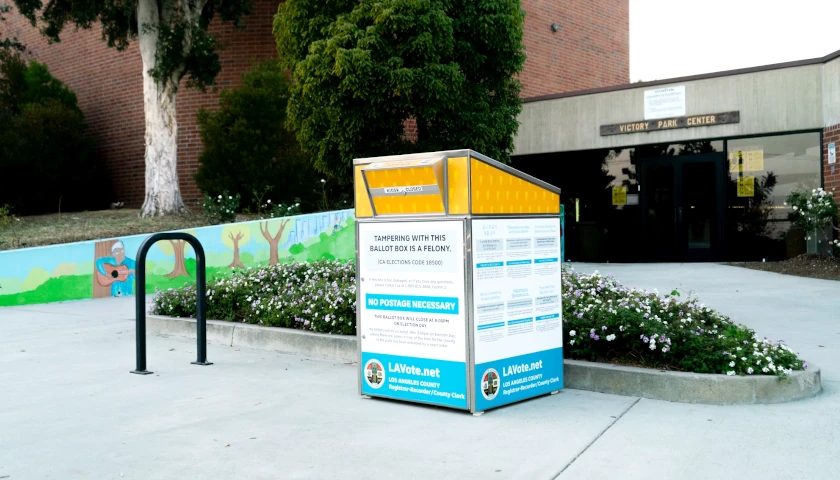by Robert Romano
President Donald Trump’s second year in office marked the strongest economic growth since 2005 at 2.9 percent, according to data compiled by the Bureau of Economic Analysis, beating every one of President Barack Obama’s years in office — for now.
It was by a nose, and the numbers are still subject to revision.
Obama’s strongest year was 2015, also at 2.9 percent. But both figures are subject to rounding. So, technically, 2018’s growth was slightly stronger at 2.8841 percent, compared to 2015’s 2.8811 percent. And to be fair, it will not take that much of a downward revision for the fourth quarter’s 2.58 percent number — only about 0.05 percent down — in order for 2015 to still come out on top as the strongest year in recent memory in terms of growth.
Of course, that’s only a problem if one thinks this is as good as the Trump economy will get.
Leaving that aside, the economy itself has not grown above 3 percent since 2005, and not above 4 percent 2000. So, to come anywhere close to 3 percent nowadays is still something of an achievement.
The White House touted the fourth-quarter-to-fourth-quarter number of 3.1 percent being the first time since 2005 that it was above 3 percent. That’s true.
But there have also been other four quarter periods in recent memory that were 3 percent or higher: 2017-Q3-to-2018-Q3 was 3 percent, 2014-Q2-to-2015-Q2 was 3.4 percent, 2014-Q1-to-2015-Q1 was 3.8 percent, 2013-Q3-to-2014-Q3 was 3 percent and 2009-Q3-to-2010-Q3 was 3.2 percent.
That is why it is important to consider other economic data for the sake of comparison. Not all growth is created equal. Does it create enough jobs? Does it lower unemployment and increase labor participation? Are incomes rising? These are the numbers that really matter the most because they make the biggest difference in individuals’ lives, livelihoods and families.
They also happen to be some of the areas where the Trump economy is the strongest.
Real average annual earnings were up 1.7 percent in the past 12 months and appear to be on an upward track, but there’s still room for growth there as it keeps ahead of overall inflation. Incomes were up 1.8 percent for 2017, but we’ll have to wait for September to find out the number for 2018.
On jobs, in 2018, unemployment came in at an unadjusted, annualized 3.9 percent, compared to 2015’s 5.3 percent, according to data compiled by the Bureau of Labor Statistics.
Since Trump took office, 4.6 million jobs have been created.
The employment-population ratio for 16-64-year-old working-age adults has improved, from 68.7 percent in 2015 to 70.7 percent in 2018.
In fact, 16-to-64-year-olds not in the labor force peaked in 2015 at 55.9 million, which came down to 54.5 million in 2018.
Labor participation among 16-to-64-year-olds has similarly improved, increasing from a 34-year low in 2015 of 72.61 percent to now 73.63 percent in 2018.
And that’s with a growing population of working age adults, albeit a slowing one as fertility has dropped markedly in the past 50 years.
Which, by the way, is one of the biggest reasons for the economic slowdown. As the growth of the civilian labor force — that is, those working and looking for work — has slowed, so too has the growth of the economy as a whole.
It’s no mystery. The civilian labor force tells you how many people are participating in the economy. Say, that number was dropping every year. Why would the economy grow? It would mean there were fewer people working and therefore buying goods and services. Some will quibble that perhaps that why GDP is not the best indicator, but when you break it down, economic growth is about how many more people are working and spending money and how much more are they making compared to last year.
Which is why, as fertility drops in the coming decades — which should lead to downward pressure on demand — it will become harder, not easier, to achieve robust growth. Just ask Japan, whose economy has barely grown nominally in 20 years amid a declining population. Which means we must adjust our expectations about what sort of growth is achievable, something politics is often slow to do.
But make no mistake, growth matters. The national debt, now $22 trillion, doesn’t care if the population declines and there’s fewer individuals to pay it off. In the last year alone, the debt to GDP ratio increased from 103.3 percent to 105.2 percent. Our nation’s adversaries that are pouring their own economic growth into their militaries will not care if we are ready or not for the next major conflict.
The Trump economy has some bright spots, noted above, that show younger Americans are entering the labor force and working in greater numbers than they were before. It’s the lowest unemployment in a generation, and historic lows for minorities.
It’s fair to say the Trump economy is making the most of the growth it is currently seeing, a testament to the President’s focus on lowering taxes, particularly business taxes, which has helped boost hiring, as well as the deregulation and emphasis on bringing production back to the U.S. via better trade deals. In the near-term, we will need more of that to help even more Americans see the fruits of their labors.
Looking forward to 2020 and beyond, to see more growth, policies conducive to creating jobs must continue but there is also the business cycle to contend with — and long term, the demographic issues facing not only the U.S. but the world amid declining fertility are quite real. If we really want more growth, long term, we need more babies.
– – –
Robert Romano is the Vice President of Public Policy at Americans for Limited Government.




